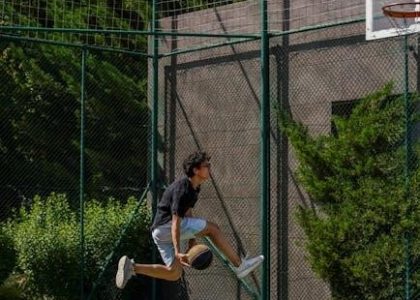Anterior Total Hip Replacement Protocol PDF: A Comprehensive Guide
This comprehensive guide details the rehabilitation process following an anterior total hip arthroplasty (ATHA). It outlines criterion-based protocols applicable to standard hip replacements. Modifications are often necessary based on specific surgical techniques and other patient-specific factors to optimize recovery.
Anterior Total Hip Arthroplasty (ATHA) is an elective surgical procedure designed to alleviate pain and restore function in a hip joint affected by end-stage arthritis or other debilitating hip pathologies. ATHA offers a minimally invasive approach, accessing the hip joint from the front, potentially leading to quicker recovery times compared to traditional approaches. This method often results in less disruption to surrounding muscles and tissues, which may contribute to reduced post-operative pain and improved early mobility.
The success of ATHA relies heavily on meticulous pre-operative planning, skilled surgical execution, and, crucially, active patient participation in a structured rehabilitation program. This protocol serves as a guide for clinicians and patients, outlining the key phases and goals of rehabilitation following ATHA. It emphasizes the importance of adhering to specific precautions and engaging in targeted exercises to optimize healing, restore range of motion, and facilitate a return to functional activities. Adherence to this protocol, along with consistent communication with the surgical and therapy teams, is vital for achieving the best possible outcomes.
Goals of Rehabilitation Following ATHA
The primary goals of rehabilitation following Anterior Total Hip Arthroplasty (ATHA) are multifaceted, focusing on restoring function, minimizing complications, and facilitating a safe return to daily activities. Initially, the emphasis is on protecting the surgical site and managing post-operative pain and swelling. This involves adhering to specific weight-bearing restrictions as determined by the surgeon and implementing strategies for pain control.
As healing progresses, the focus shifts to regaining range of motion in the hip, strengthening surrounding muscles, and improving gait mechanics. Specific exercises are prescribed to target quadriceps, hamstrings, and gluteal muscles, with a gradual progression towards more challenging activities. Ultimately, the aim is to enable the patient to perform activities of daily living (ADLs) independently and safely, without pain or limitations. Long-term goals include returning to recreational activities and achieving optimal functional outcomes, ensuring a sustained improvement in quality of life. Throughout the rehabilitation process, continuous monitoring and adjustments are made to tailor the program to the individual’s specific needs and progress.

Phase I: Early Post-operative (Surgery to 4-6 Weeks)
This initial phase focuses on protecting the healing hip, controlling pain and swelling, and initiating gentle exercises. Weight-bearing status, as prescribed by the surgeon, is strictly followed to promote proper healing.
ROM Precautions and Exercises
Following anterior total hip arthroplasty, adhering to specific range of motion (ROM) precautions is crucial to prevent dislocation. Typically, these precautions involve limiting excessive hip extension, adduction, and external rotation during the initial post-operative period. Hip flexion should be kept under 45 degrees.
Exercises in this phase emphasize gentle restoration of ROM within the prescribed limits. Ankle pumps, quad sets, and heel slides are common starting exercises to improve circulation and muscle activation. Assisted ROM exercises, such as using a towel to gently pull the leg into flexion, can also be incorporated.
Patients should be educated on proper positioning and movement techniques to avoid violating precautions during activities of daily living (ADLs). Maintaining a slightly abducted position while lying down and avoiding crossing the legs are important considerations. Consistent adherence to these precautions and gradual progression of exercises will aid in a safe and effective recovery, gradually increasing flexibility while safeguarding the new hip joint.
It is essential to avoid hip flexor irritation and compensation by gently rolling the top hip forward of the bottom hip while lying down. This approach helps to minimize stress on the anterior hip structures during early rehabilitation.
Weight-Bearing Status and Ambulation
Post-operative weight-bearing status after anterior total hip arthroplasty (ATHA) is typically determined by the surgeon. Most often, patients are allowed to weight-bear as tolerated (WBAT) immediately after surgery. However, this can vary depending on individual factors, such as bone quality and surgical technique.
Ambulation begins early, often on the same day as surgery, with the use of assistive devices like a walker or crutches. These devices provide support and stability, allowing patients to gradually increase their weight-bearing load while maintaining proper gait mechanics. Short walks within the household are encouraged to promote circulation and prevent stiffness.
Physical therapists play a vital role in instructing patients on proper gait patterns and the use of assistive devices. They monitor weight-bearing tolerance and provide guidance on progressing from a walker to crutches, and eventually to independent ambulation. Uneven surfaces and stairs should be approached cautiously, with appropriate support and guidance.
Consistent adherence to the prescribed weight-bearing status and proper ambulation techniques are crucial for optimal healing and functional recovery following ATHA. Regular assessment and adjustments by the physical therapist will ensure a safe and effective progression.
Pain Management and Swelling Control
Effective pain management is a crucial component of post-operative care following anterior total hip arthroplasty (ATHA). Pain control strategies typically involve a combination of oral pain medications, as prescribed by the surgeon, and non-pharmacological approaches.
Swelling is a common occurrence after surgery and can contribute to pain and discomfort. Several methods can be employed to control swelling, including ice packs applied to the surgical area for 15-20 minutes at a time, several times a day. Elevation of the operated leg can also help to reduce swelling by promoting venous drainage.
Compression bandages or stockings may be used to provide additional support and minimize swelling. Active exercises, such as ankle pumps, also assist in reducing swelling by improving circulation in the lower extremities.
It’s important to monitor the surgical incision for signs of infection, such as increased redness, warmth, or drainage. Prompt reporting of any concerning signs to the healthcare provider is essential.
A multi-faceted approach to pain management and swelling control, involving medication, ice, elevation, compression, and exercise, is vital for promoting comfort and facilitating early rehabilitation after ATHA. Individualized strategies should be tailored to the patient’s specific needs.

Phase II: Intermediate Rehabilitation
Phase II focuses on progressive strengthening, gait training, and advancing activities of daily living. The goal is to improve functional independence, reduce reliance on assistive devices, and prepare for a return to more demanding activities.
Strengthening Exercises
Strengthening exercises are a crucial component of the intermediate rehabilitation phase following anterior total hip arthroplasty (ATHA). The goal is to restore muscle strength and endurance around the hip joint, which is essential for stability, functional movements, and long-term joint health. These exercises should be performed under the guidance of a physical therapist, who can tailor the program to individual needs and progress.
Initial exercises may include isometric contractions of the quadriceps, hamstrings, and gluteal muscles. These are followed by progressive resistance exercises using resistance bands or light weights. Examples include hip abduction, adduction, flexion, and extension exercises. Closed-chain exercises, such as mini-squats and step-ups, are also incorporated to improve functional strength and balance.
It’s important to consider potential gluteus medius involvement, especially following a lateral approach, and modify the rehabilitation plan accordingly. Throughout the program, monitor for pain, swelling, and reactive effusion, and adjust the intensity as needed. The aim is to achieve pain-free functional mechanics. Remember that strengthening is a gradual process, and consistency is key to achieving optimal results.
Gait Training and Assistive Devices
Gait training is a vital aspect of the intermediate rehabilitation phase after anterior total hip arthroplasty (ATHA), focusing on restoring a normal and efficient walking pattern. Assistive devices, such as walkers or crutches, play a crucial role in providing support and stability during this period. Weight-bearing status, as determined by the surgeon, guides the progression of gait training. Initially, patients may be partial weight-bearing, gradually increasing to full weight-bearing as tolerated.
Gait training involves practicing proper posture, step length, and cadence. Physical therapists provide guidance on using assistive devices correctly and progressing from one device to another as strength and balance improve. The focus is on achieving a smooth and symmetrical gait pattern on even and uneven surfaces, including stairs. Monitoring for any gait deviations and addressing them with specific exercises or adjustments to assistive devices is essential.
The ultimate goal is to achieve independent ambulation without assistive devices, allowing patients to return to their daily activities with confidence and ease. Regular assessment and feedback from the physical therapist are crucial for optimizing gait mechanics and preventing compensatory patterns.
Progression of Activities of Daily Living (ADLs)
The progression of Activities of Daily Living (ADLs) is a key focus during the intermediate rehabilitation phase following anterior total hip arthroplasty. This involves gradually reintroducing and improving the patient’s ability to perform essential daily tasks independently and safely. Initially, modifications and adaptive equipment may be necessary to accommodate limitations in range of motion, strength, and balance.
As rehabilitation progresses, the emphasis shifts to reducing reliance on assistive devices and increasing the complexity of ADLs. This may involve practicing tasks such as dressing, bathing, toileting, cooking, and light housekeeping. The physical therapist provides guidance on proper body mechanics and energy conservation techniques to minimize stress on the hip joint. The goal is to ensure the patient can perform all ADLs without pain, reactive effusion, and with appropriate functional mechanics.
Regular assessment of the patient’s progress and adjustment of the rehabilitation plan are crucial for optimizing functional outcomes. The ultimate aim is to enable the patient to return to their pre-operative level of independence and participate fully in their desired activities.

Considerations for Specific Approaches and Complications
Rehabilitation protocols must address specific surgical approaches and potential complications. The lateral approach, for example, requires consideration for gluteus medius repair. Vigilant monitoring for infection and managing any complications is paramount throughout the rehabilitation process for best outcomes.
Lateral Approach Considerations
When a lateral approach is utilized for total hip arthroplasty, specific rehabilitation considerations become crucial, particularly concerning the gluteus medius muscle. Often, a partial repair of the gluteus medius is performed during the lateral approach, necessitating careful management during the initial post-operative phase. The integrity of this repair dictates the progression of strengthening exercises, especially those involving hip abduction.
Early rehabilitation should prioritize protecting the repaired gluteus medius. Excessive or premature hip abduction exercises can compromise the repair, leading to persistent weakness and gait abnormalities. Therapists must closely monitor patients for any signs of gluteus medius dysfunction, such as Trendelenburg gait, and adjust the rehabilitation program accordingly.
Weight-bearing restrictions may be modified depending on the extent of the gluteus medius repair; Communication between the surgeon and rehabilitation team is paramount to ensure appropriate precautions are followed. Gradual progression of hip abduction strengthening, emphasizing proper form and avoiding compensatory movements, is essential for optimal functional recovery. The lateral approach requires strict adherence to precautions.
Managing Potential Complications and Infections
Post-operative management following total hip arthroplasty involves vigilant monitoring for potential complications, with infection being a significant concern. Early detection and prompt intervention are critical to minimize long-term consequences. Patients should be educated on the signs and symptoms of infection, including increased pain, swelling, redness, warmth around the incision site, fever, and drainage. Any suspicion of infection warrants immediate medical attention.
Prophylactic measures, such as adherence to strict sterile techniques during dressing changes, are essential in preventing infection. Patients with pre-existing conditions, like diabetes or compromised immune systems, require heightened surveillance. In cases of confirmed infection, treatment typically involves intravenous antibiotics, and in some instances, surgical intervention may be necessary to debride the affected tissues.
Beyond infection, other potential complications include dislocation, deep vein thrombosis (DVT), pulmonary embolism (PE), and nerve injury. Rehabilitation protocols must incorporate strategies to minimize these risks, such as patient education on hip precautions, prophylactic anticoagulation, and careful monitoring for neurological deficits. Early mobilization and appropriate exercise progression are crucial for preventing DVT and PE. The therapist plays a vital role in identifying and addressing potential complications throughout the rehabilitation process.

Long-Term Goals and Functional Outcomes
The ultimate goal following anterior total hip arthroplasty (ATHA) is to restore optimal function, reduce pain, and improve the patient’s overall quality of life. Long-term rehabilitation focuses on achieving and maintaining these functional outcomes. Patients should aim to return to their desired activities of daily living (ADLs), recreational pursuits, and vocational tasks with minimal limitations.
Achieving these goals requires a comprehensive and progressive rehabilitation program that emphasizes strength, endurance, balance, and coordination. Exercises should be tailored to the individual’s specific needs and functional deficits. Regular participation in low-impact activities, such as walking, swimming, or cycling, is encouraged to maintain cardiovascular fitness and promote long-term joint health.
Patients are educated on strategies for self-management, including proper body mechanics, joint protection techniques, and pain management strategies. The rehabilitation team works collaboratively with the patient to develop a personalized long-term exercise plan that can be performed independently. Periodic follow-up appointments with the surgeon and physical therapist are recommended to monitor progress, address any concerns, and ensure continued success in achieving long-term functional outcomes following ATHA.





